Following the Federation of Australia on 1 January 1901, enthusiasm for a national day of celebration began across the country. In response, the Wattle Day League formed in September 1909 to campaign for the establishment of such a national day. Their aim was to promote patriotic pride among Australians and ‘Australian Britons’ with the first South Australian branch forming in August 1910. On 8 January 1913 Wattle Day became federalised as a day of celebration seeing the wattle blossom become incorporated into the design of the Commonwealth Arms. After the outbreak of the First World War the Wattle Day League shifted its efforts to the home front and focussed on raising funds for the troops overseas and commemorating the war. The conclusion of the First World War saw the Wattle Day League continue to celebrate Wattle Day although the League and the national day gradually died out after the 1930s.
Beginnings of the Wattle Day League
The Wattle Day League was first established in Sydney in September 1909 with the goal of establishing a national day of celebration, ‘Wattle Day’, across Australia. They aimed to gain the cooperation of other states in making their message known and promote patriotic pride among ‘Australian Britons’.
South Australian Wattle Day League
In August 1910, William J. Sowden was invited to form a Wattle Day League branch in South Australia while on business in Sydney. Following two preliminary meetings at the Adelaide town hall to garner interest in the movement, one that was attended by the Major, the South Australian Wattle Day League was formed. Lady Symon was elected President and William Sowden was elected Vice-President. Membership was made up of Australian born women or women who were wives of the ‘Australian Natives Association’, a patriotic association for men only.
Aims and Activities
Prior to passing away, William Sowden wrote a booklet recording the history of the Wattle Day League, where he outlined the reason for its formation which was ‘the private desire to have a body of ladies working to advertise the objects of the Australian Natives Association, outside its own membership’.
The Australian Natives Association played a leading role in the movement for Federation in the last twenty years of the nineteenth century. Following Australia’s Federation in 1901 it continued patriotic activity through the observance of Australia Day and supported other nationalistic issues, including the adoption of the wattle blossom as the floral emblem of Australia.
The Wattle Day League aimed to ‘encourage the planting and conservation of the wattle as a matter of practical as well as sentimental policy’ together with the desire to introduce a celebration of Wattle Day throughout the Commonwealth.
Sowden in his outline history of the Wattle Day League stated the desire that all people, ‘rich and poor, high and low, well or ill – should proclaim themselves as Australians or Australian Britons’.
On 8 January 1913 Wattle Day became federalised at a pan-Australian Wattle Day League conference in Melbourne. The wattle blossom accessory was introduced to the design of the Commonwealth Arms following the recommendation of Prime Minster, Andrew Fisher.
War Time
Despite the Commonwealth declaring war on Germany on 4 August 1914 the celebrations of Wattle Day on 1 September did not seem to be dampened. The South Australian Chronicle reported that celebrations occurred across the state ‘with enthusiasm’. Statues and entrances to prominent public institutions were decorated with wattle along with ‘horses, motor cars, and vehicles of all descriptions’.
The same year the Wattle Day League was partly responsible for planting what is believed to be the first memorial tree, commemorating the First World War, anywhere in the world. Eight wattle trees and a British oak were planted in Creswell Gardens on August 29 symbolising the eight states and territories of Australia and their commitment to the war. Although the wattle trees are now gone, the oak tree still stands.
By August 1915, less than a year later, this attitude had changed following the landing of the Australian troops in Gallipoli on April 25th. On 12 August 1915, Mrs Jeanne F Young, Hon Secretary and Organiser of the Australian Wattle Day League, South Australian Branch, wrote to the town clerk seeking permission to plant a Wattle Grove in the South Parklands.
The aim of the grove was to commemorate the landing of the Australian troops in Gallipoli and consequently, on 7 September 1915, the Wattle Day League organised a memorial day in the South Parklands at ‘Wattle Grove’. The League erected an obelisk where mothers and relatives of the men killed during the assault could come and place floral tokens. The obelisk, known as the Dardanelles Memorial, was designed to represent the cliffs Australian soldiers had climbed at Gallipoli and is the oldest war memorial commemorating Gallipoli in the state.
The main patriotic work undertaken by the Wattle Day League was in the form of raising funds to send ambulances to the troops overseas, providing a practical service for the soldiers. One of these patriotic demonstrations took place on Saturday 6 March 1915 at Jubilee Oval with an afternoon tea being hosted by the Wattle Day League. A selection of local Adelaide bands gave their services for free and a number of boy scouts clubs, including the Semaphore, Rose Park, Kensington, Wayville and Croydon offices, took part in the procession.
The Wattle Day League rose over £100 on the day through the sale of Wattle Day badges combined with the auctioning of boxes of chocolates. It was reported in The South Australian Register that throughout 1916 the Wattle Day League raised a total of £4,068 ($444,470 Australian in 2015) for the ambulance fund through their fundraising activities.
This was not the only war effort undertaken by the League, which also participated in producing homely goods for Australian servicemen by sending them clothes and letters, among other things. In 1915, the South Australian Register reported that the Committee of the Wattle Day League was looking for ‘lady members to form small private sewing circles’ in order to make garments for the children of the poor of South Australia during the winter months. The committee was to publish the names of makers and give priority to the children of soldiers and sailors.
The League also obtained permission from the Australian armed forces for soldiers to wear a sprig of wattle on their official uniforms. Sprigs of wattle were handed out free to departing soldiers and were given out in field hospitals and military camps across the front. The presence of wattle blossoms and sprays of wattle within mail for servicemen became a tradition and boxes of them were shipped to the frontline to help comfort injured soldiers in hospital and accompany personal letters from home.
By 1918 the Wattle Day League chose not Wattle Day, but the anniversary of the Gallipoli landing for the commemoration of the dead. On 25 April the League carried out services at Wattle Grove and arranged for a stone cross to be placed on top of the obelisk recognising the Christian sacrifice and significance of the date to Australians. The Wattle Day League erected the obelisk following reports of the success of the landing at Dardanelles, with the addition of the cross remembering those who were buried there.
Post-War
Following the end of the First World War the Wattle Day League continued its fundraising activities and contributed the funds towards local charities, especially those which were established to help aid returning soldiers. On August 27 1926 the League organised a fundraising day where sales of wattle blossom were to be conducted in front of the entrances to business premises. The proceeds were equally distributed between the Partially Blinded Soldiers’ Association and the Queen’s Home.
Despite this, the maintenance of Wattle Grove had become a burden to the Wattle Day League as the focus of commemoration shifted and remembrance rituals began taking place across Adelaide. Following the end of the war the Wattle Day Committee had sought more parkland in recognition of the League’s President, but due to the neglect shown to the trees planted to ‘honour the debt’ the Adelaide City Council rejected the application.
In August 1923 the council refused to release more land and restricted expansion of the current Wattle Grove. The continued neglect of the grove resulted in the obelisk being removed from Cohen Avenue in the South Parklands, in October 1940, and relocated to Lundie Gardens on South Terrace, where it remains today.
The Wattle Day League wasn’t just important in raising funds on the home front to aid the Australian soldiers overseas. The Wattle Day League was important in nurturing ‘the seeds of Australian identity’ as the League called upon people to ‘proclaim themselves as Australians or Australian Britons’. Wattle Day continued to be celebrated during the 1920s and 1930s, although the day, and the activities of the Wattle Day League, became associated with schools and tree planting, which lead to the loss of the patriotic element that had made it so popular. Consequently, the observance of Wattle Day and the prominence of the Wattle Day League gradually died out.


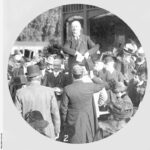

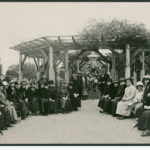
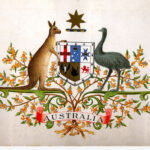
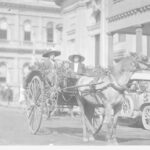
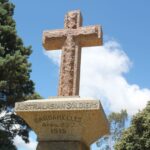

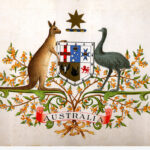
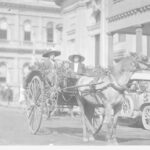
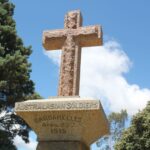
Comments
2 responses to “Wattle Day League”
hi, do you know if this league exists today?
I don’t believe the League continues Lee, but there is a Wattle Day Association you can join if you are interested: http://www.wattleday.asn.au/support-us/Membership